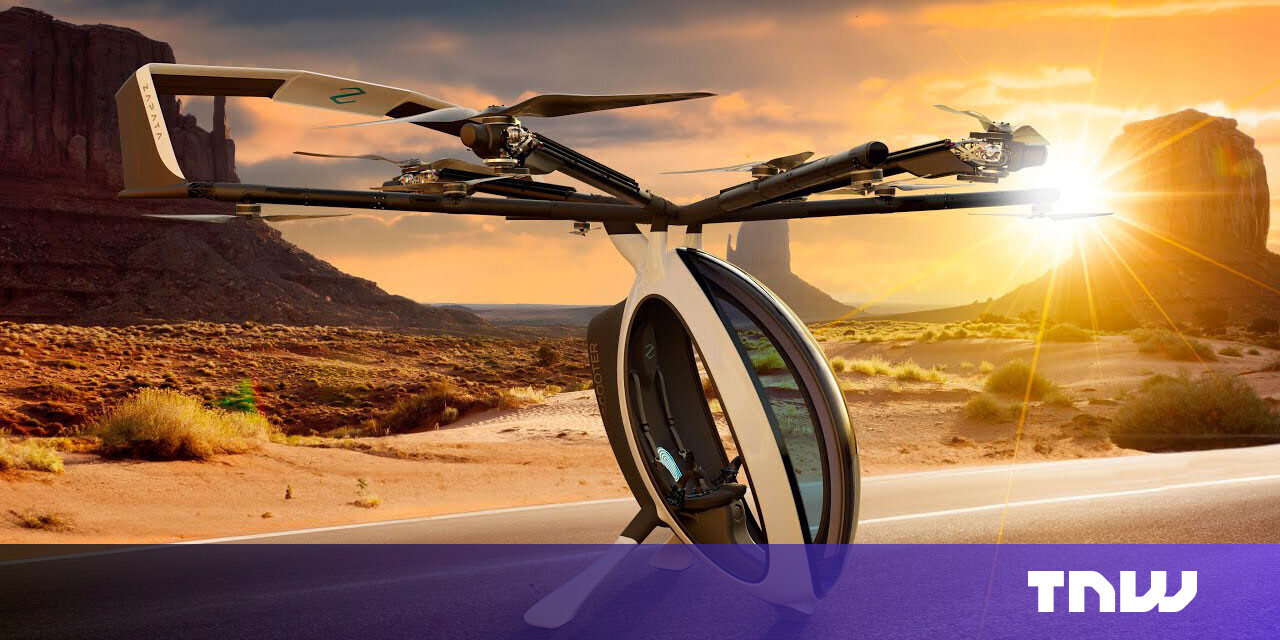
Franky Zapata, the French inventor-slash-daredevil who flew across the English Channel on a hoverboard, has launched an ‘airscooter’ to go alongside his jet-powered flyboard and flying deckchair.
Zapata, Franky’s company, unveiled the egg-shaped hybrid-electric vertical take-off and landing (VTOL) prototype at the Viva Technology conference in Paris, France.
The “personal flying machine” is supposedly compliant with the Federal Aviation Authority Regulations and can be flown without a pilot’s license in the US as an “ultralight aircraft”. Thanks to the fly-by-wire flight controller and plenty of safety sensors, piloting the airscooter should be as easy as flying a drone. Its market release is yet to be determined.
Equipped with 12 propellers, the aircraft carries eight electric motors and four petrol-powered motors for a maximum speed of 100 km/h at an altitude of 3000-4000 metres. Zapata has partnered with ONERA, the French Aerospace Lab, and the French Defence Agency to develop its own turbine engines.
The choice of a petrol-hybrid definitely makes the airscooter less sustainable than the assortment of pure-electric VTOLs currently under development throughout the world. But that probably doesn’t matter that much to Franky, a self-professed lover of jet skis, jet-powered cars, and jet-powered hoverboards — basically anything powered by kerosene.
A former French jet ski champion, Franky first rose to fame in 2011 when he stuck some water pipes, ankle, and wrist straps to the back of a jet ski and invented the Flyboard — and a whole new sport in the process. In 2016, he took the concept to new heights (literally) by using jet engines instead of water pipes to create the Flyboard Air, a type of hoverboard powered by gas turbines.

More recently, he invented the JetRacer, essentially a flying deckchair powered by 10 small jet turbines capable of speeds up to 250 km/h, and altitudes up to 3,000 m.
There’s no word yet from Zapata on when his latest invention will be available, whether it is flying yet, or how much it might cost to buy. While you earnestly wait, enjoy this undeniably epic video of Franky racing a Lamborghini through the Utah desert in a jet suit at speeds of over 160 km/h. You’re welcome.






